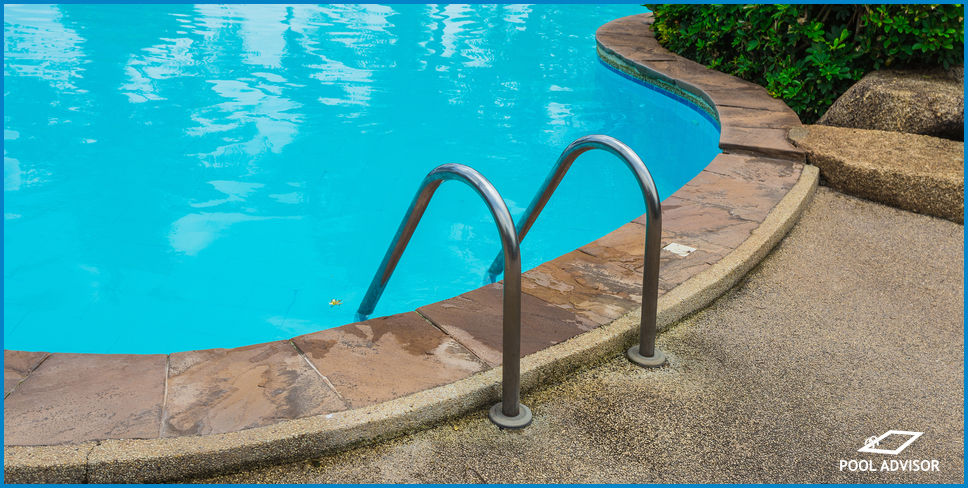
Pool Black Spot Removers - How Do They Work?
Black spot algae is one of the most difficult strains of algae to remove from a swimming pool. This algae is especially good at working itself into small crevices in your pool’s lining, making it even more frustrating to remove from pools with pebblecrete or other textured linings.
In this article, we will discuss what pool black spot removers are, how they work, and when you should use one. We also include a step-by-step guide for using these products in your pool.
When To Use A Black Spot Remover
Pool black spot remover products should be used when your pool has developed a stubborn type of algae known as black spot algae.
This type of algae is known to attach itself very firmly to the surfaces in your pool, and is resistant to many other types of algae treatment, including certain algaecides and shock products.
How Do Pool Black Spot Removers Work?
Many different formulations of black spot remover are available. In general, these products tend to contain either a highly concentrated form of chlorine, a specialised algaecide compound, or both.
These agents work to penetrate and deactivate algae cells, and tend to work better at lower pH levels.
Lo-Chlor Black Spot Algae Killer is a popular choice among consumers; its formula contains an organocopper complex and alkyl dimethyl benzyl ammonium chloride, two powerful algaecide compounds.
The Lo-Chlor Black Spot 900 algaecide (a granulated option) is often sold as a companion product to the formula mentioned above, and contains a 90% concentration of trichlor.
Granulated treatments are efficient for spot treatments because granules of the product can be left to dissolve on stubborn areas of algae.
How To Use Pool Black Spot Treatments
Confirm Black Spot Algae
Before treating your pool for black spot algae, it is important to determine that you are dealing with algae and not a similarly-presenting condition. Certain types of metal staining can cause black spots to appear on the surfaces of your pool that can sometimes be mistaken for black spot algae.
To determine if your black spots are algae, scrub them firmly with a brush that is appropriate for your pool surface.
If pieces of this spot lift from the surface and break away during scrubbing, your spots are composed of algae. Metal stains that cause black spots are typically highly resistant to scrubbing, and may show scratches afterwards.
Choose A Product
When choosing a black spot algae remover for your pool, make sure to get a product that is appropriate for your pool type.
Certain products are more appropriate for textured pool linings, and others (such as granulated trichlor) are entirely incompatible for use as a spot treatment in vinyl pools.
Note that granulated black spot removers are more effective for spot treatments and work well when used in combination with scrubbing.
While solution-based treatments require less effort during the initial application phase and can be applied to the entire pool, these products will also typically require scrubbing for best results.
Dose Product Into Pool
Before dosing your pool with a black spot treatment, consider using hydrochloric acid or dry acid to lower the pH and total alkalinity of your water. Always check the treatment you are using to see if it is compatible with this change in pH.
Many algaecide treatments as well as sanitising products work better in pools where the pH has been temporarily lowered. One reason for this is that slightly acidic water weakens the outer barrier of algae cells, allowing them to be more easily penetrated by treatment chemicals.
Treat The Pool
Add your pool black spot remover as indicated on the product packaging. Granulated formulas that are not premixed should typically be added directly to spots of concern, taking care to cover as much of the algae as possible with the treatment product and then leaving it to dissolve.
Liquid treatment solutions and premixed treatments typically need to be added to your pool’s water while the pump is running, and left to circulate for an extended period of time.
After Care
After letting your pool black spot treatment weaken your algae, it is advised that you scrub these spots for the most thorough removal. If you have a plaster, concrete, or pebblecrete pool, you can use a wire-bristled brush for this purpose.
Once algae is eradicated, you should then rebalance the pH and total alkalinity of your pool to levels within the normal ranges of 7.2-7.6 and 80-120 parts per million.
Conclusion
Black spot algae treatments are highly specialised products that are designed to help you rid your pool of black spot algae once and for all.
These products work by using highly concentrated algaecides and sanitizer compounds to tackle algae directly, making them more effective than your average algae treatment products.
Do you have any questions about pool black spot remover? Get in touch with us in the comments, we’d love to help!

Louis
A chemical engineer by trade, Louis is committed to debunking myths in the pool industry by explaining the underlying chemistry and making it accessible to all.
